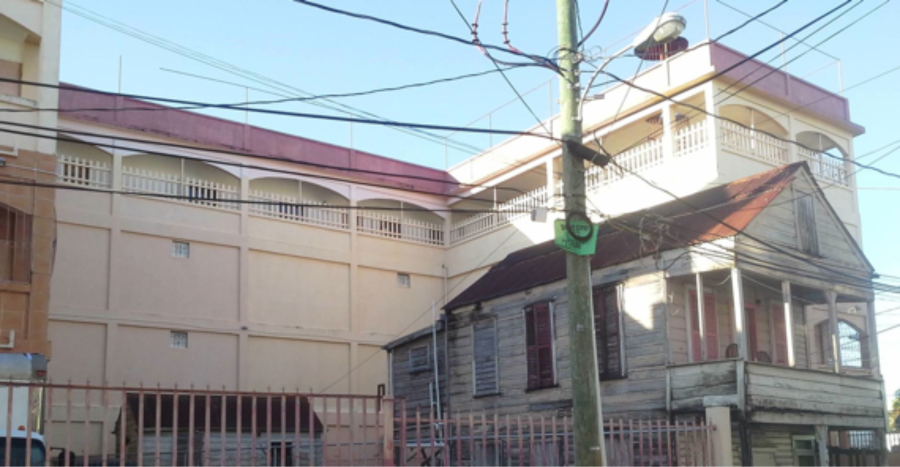 Threats to the preservation of Belize City urban cultural heritage and practices have increased over the past decades as a result of urban pressures, which impact the physical integrity of monuments and the authenticity of historical sites and urban layout; of changing demographics and rural to urban migration, which have caused disruption of intangible cultural practices, loss of community memory, cultural impoverishment and homogenization; and of the ongoing gentrification processes in historic areas, which have marginalized vulnerable communities, particularly the poor and the elderly, the latter, who are the historic dwellers of these areas, and the repositories of their memory.
Threats to the preservation of Belize City urban cultural heritage and practices have increased over the past decades as a result of urban pressures, which impact the physical integrity of monuments and the authenticity of historical sites and urban layout; of changing demographics and rural to urban migration, which have caused disruption of intangible cultural practices, loss of community memory, cultural impoverishment and homogenization; and of the ongoing gentrification processes in historic areas, which have marginalized vulnerable communities, particularly the poor and the elderly, the latter, who are the historic dwellers of these areas, and the repositories of their memory.
This pre-existing state of affairs is further worsened by two phenomena. Firstly, by changing climate and climate variability, as ‘Ancient buildings were designed for a specific local climate.’ The migration of pests, for example, can have adverse impacts on the conservation of built heritage, and increasing sea level rises threaten the survival of many coastal sites. In addition, the conditions for safeguarding of archaeological evidence may be degraded in the context of increasing soil temperature.’[1] And secondly, by the drastic reduction of the dominant position of the Creole ethnic grouping, whose history, traditions, language, beliefs and practices, are the DNA of Belize City, by 19%, that is, from more than 75% of total population of the City pre 1980, to 56% in 2010, while the Mestizo population has increased from 12.2% to 34.5%.
This has implications to nurturing community spirit, and the regeneration of social and cultural aspects, with communities changing the way they live, work, worship and socialize in buildings, sites and landscapes, and migrating and abandoning their built heritage, resulting in social and spatial segregation.’[2]
Undoubtedly, this will inevitably lead to the disappearance of the urban cultural heritage of Belize City, which is also recognized as a key resource and asset for sustainable urban development and poverty eradication.[3] It is therefore crucial to preserve, for future generations and ongoing poverty eradication programmes, the city’s urban cultural heritage identity, the physical testimony of its multifaceted history, and the cultural values it embodies.
The ‘Belize City Urban Cultural Heritage in Young Hands Project’ will pilot the preservation of the urban cultural heritage of an underserved inner city community in Albert and Mesopotamia Constituencies in Southside Belize City, which by it’s physical and socio-economic profile and location, is extremely vulnerable to the impacts of climate change and climate variability, that is, rising sea levels, more intense storms and flooding. (See Attachment 1- Project Boundary)
- It will achieve this by firstly approaching the preservation of urban cultural heritage holistically, that is, inclusive of the urban elements (urban morphology and built form, open and green spaces, urban infrastructure), architectural elements (monuments, buildings and sites) and intangible elements, (traditional knowledge, local practices, cultural expressions and cultural industries) all of which comprises the urban cultural heritage.[4]
- And secondly, by humanizing the architectural and urban elements in this community, that is, by layering and integrating the intangible elements of the Kriol culture on and into the documentation and representation of the spatial evolution of both the architectural and urban elements, through knowledge and capacity building and application, and intergenerational and intercultural dialogue.
Project objectives include equipping a minimum of 50 young persons with the knowledge and skills set to become community urban cultural heritage preservation practitioners; Increasing awareness of a minimum of 80% of the families participating in the project of their urban cultural heritage history and the need for its preservation for economic and social development; Ensuring a minimum of 75% of participating institutions and schools commit to engage in further education, research and actions for community urban cultural heritage preservation; Producing 500 age appropriate storybooks, 500 resource literature booklets, 25-30 min documentary and 1 physical and 1 digital model of the community urban cultural heritage evolution timeline; a Real Time Digital Data Portal for sustained knowledge sharing and real time learning experiences and best practices in community urban cultural heritage preservation; to be a model to roll out to other under served communities in the city and country which are confronted by similar threats, and to share with regional and global partners;
BAP is excited about the prospect of partnering with you and contributing our collective knowledge, skills set and experiences to addressing these challenges. This project is linked to our signature programme, ‘Building Urban Resilience to Climate Change in Belize’, the goal being to create and support a community of urban climate change resilience practitioners to contribute to the reduction of the vulnerability of populations and systems to the impacts of climate change.
The ‘Belize City Urban Cultural Heritage in Young Hands Project’ compliments the ‘Belize City Master Plan’ and the ‘ House of Culture and Downtown Belize City Project’ and will be implemented over 12 months and in five phases.








